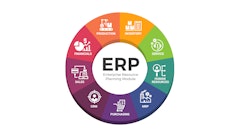
Many of today’s energy leaders are under pressure to improve productivity and deliver cost savings like never before. Oil and gas company leaders, for example, are being asked to reduce supply chain-related costs by 40-60% on average, according to a national study by Workrise and Newton X.
If you ask those same leaders — who are trying to maximize their returns on CAPEX and minimize the impact of OPEX — about their ability to purchase and deploy the goods and services they need for their projects, they'll say they’re getting by just fine. Those at mid- to large-sized companies will even say they're built for it. Yet close to 40% of them say they lack the real-time spend data and reporting essential to proactively spend and project management, and nearly one-third say they lack reliable data on their most critical KPIs.
Why the disconnect? The reality is that the way energy companies manage their vendors, from sourcing new ones to paying for completed work, is incredibly complex, error-prone, and inefficient.
For an industry that historically has solved problems by layering on Band-Aids in the form of specialized, siloed software tools and then adding people to administer those Band-Aids, where do those cost savings come from? What does a pressure release valve look like for a sector with enormous CAPEX spending (an expected $1 trillion in the field this year alone) and costs measured in more than just dollars, with safety, productivity and execution risk at stake?
The answers can be found in the source-to-pay (S2P) lifecycle. From the moment an energy operator needs to find a new vendor for a project, the road to completed work and paid invoices is filled with obstacles. This is putting massive strain on organizations, whether they know it or not.
A broken process
Most companies use eight or more separate tools to manage the S2P lifecycle, and much of the data entry is manual, so data remains siloed, and leaders lack the real-time information they need to track their KPIs, much less make confident decisions.
In addition to millions of dollars in hard costs, this means that for the average oil and gas company, more than 300 full-time employees (FTEs) must touch the process in some way, according to another study by Workrise. It also means that collaboration between the field and the headquarters is consistently strained because there is no single source of truth for vendor data.
The result of this fractured system is waste.
Wasted effort. Field superintendents in Midland have to call supply chain teams in Houston to find out if a vendor is approved to work or not; operations managers are forced to spend hours digging through emails and creating new Excel spreadsheets in a cumbersome, labor-intensive effort to compare vendor bids for work on a project.
Wasted capital. Companies have no way of knowing if they are paying the right price for the services they need in the locations where they operate. Without this knowledge, there’s no true competition and thus, no leverage on pricing.
Wasted time and lost money. When a vendor no-shows or doesn’t have the proper safety certifications, millions are on the line because in oil and gas field operations, there is no way to recover even a single minute of lost production time.
In this realm, high volumes of seemingly small costs can balloon into significant amounts — of both dollars and time spent by FTEs who could otherwise be prioritizing higher-impact work.
A new way forward
For companies in such a capital-intensive industry, reducing waste and improving the ROI on every dollar deployed, by even a few percentage points, is a win. Meaningful changes are required to do this successfully. But energy leaders are struggling to find the bandwidth.
Rising costs, and pressure to cut costs, represent 2 of the Top 3 challenges those leaders face, according to the Workrise-Newton X study, with geopolitical uncertainty rounding out the Top 3. But across all categories of respondents, the No. 1 blocker to implementing solutions that address these challenges is a lack of sufficient human resources to do so.
The S2P lifecycle is one of the few remaining — and most overlooked — opportunities for energy companies to move the needle. The operators that find ways to adapt, and invest the time and resources required to do so, will be the successful energy companies of the future.
It can start small with a project, or an initiative — like using an M&A integration as a pilot case for a unified S2P solution and strategy. But over the long term, holistic integration will offer the biggest gains to companies that are willing to take the leap with use cases like end-to-end CAPEX management and management of non-core spend, vendor compliance, and field tickets, for starters. It’s time to ditch the status quo and step into the future of efficient source-to-pay management in energy.



















